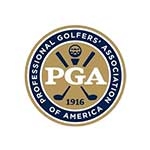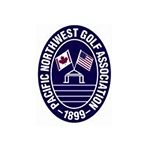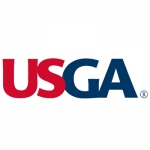Rule of the Month: The Birds and The Bees
By Sr. Rules Officials: Pete Scholz and Terry McEvilly
Click Here for the Rule of the Month Archive 
“It’s time we had a chat about the birds and the bees.” Spring has sprung and love is in the air. And many of us are beginning to lovingly take our clubs out of storage as our love affair with golf races on. And please don’t forget to brush off the Rule book and be ready to share the love of the Rules.
One of the guiding principles in the Rules is to play the course as you find it. However, our feathered friends, insects and animals in general can add confusion when dealing with a given situation. It is important to note that any living member of the animal kingdom (other than humans) is considered an animal under the Rules of Golf. This includes mammals, birds, reptiles, amphibians and invertebrates (such as worms, insects, spiders and crustaceans). Additionally, some members of the animal kingdom are also considered loose impediments under the Rules of Golf.
Test your knowledge of the birds and the bees and the possible consequences of playing golf in their natural habitat with the following questions.
Questions: True / False
- There is no free relief when a bird’s nest in a tree interferes with a player’s swing.
- A live insect crawling on the ball may be removed by the player waving his or her hand over it in an attempt to encourage the insect to leave, or the player may lift the insect off the ball.
- After a stroke from the putting green, the ball hits a bee on the green and is deflected into the hole. The stroke does not count and a ball must be replaced on the original spot.
- Before arriving at his or her ball, the player sees a bird move it several inches. The ball must be replaced on the original spot which if unknown must be estimated.
- Since spider webs are attached to an object, they may not be purposely removed.
- Before making a stroke at his or her ball near a bush in the general area, the player notices a small wasp hive on one of the branches of the bush. The player’s swing will hit some of the branches of the bush but not the branch containing the hive. The player’s options are to play the ball as it lies, or declare it unplayable, incurring a penalty stroke.
- Before making a stroke at his or her ball near a bush in a penalty area, the player notices a small wasp hive on one of the branches of the bush. The player’s swing will hit some of the branches of the bush but not the branch containing the hive. Since the player’s ball is in a penalty area, free relief is not available and the player may play the ball as it lies, or take penalty area relief, incurring a one-stroke penalty.
- On a par 3, a ball in motion after a stroke from the teeing area is deflected by a goose on the putting green and the ball comes to rest in a bunker. The stroke does not count and the player must play again from the teeing area.
- Damage to the putting green caused by geese may be repaired before a player plays from the fringe.
- A hole dug in the ground by an animal is considered an abnormal course condition and free relief is available. This includes holes dug in the ground by mammals, birds, reptiles, amphibians and invertebrates (such as worms, insects, spiders and crustaceans).
Answers:
- False. Rule 16 and the Definition of Ground Under Repair. This question highlights the importance of reading the Definitions in the Rules. Ground Under Repair includes any animal habitat (such as a bird’s nest) that is so near a player’s ball that the player’s stroke might damage it, except when the habitat has been made by an animal that is defined as a loose impediment (such as worms or insects). This is true even if the Committee in charge of the competition does not define the nest as such. Therefore, free relief is allowed for the interference from the nest.
- True. Rule 15.1 and Interpretation Loose Impediment/5. A live insect on the ball is considered a loose impediment and lifting it from the ball is not considered cleaning the ball. If the player chooses to lift the live bug off of the ball, caution should be used as purposely touching the ball or causing it to move could get the player a penalty stroke and the ball must be replaced.
- True. Rule 11.1b Exception 2. Generally, when a ball is defected by an animal, the stroke counts and the ball is played as it lies. However, one exception to this Rule is when it is known or virtually certain that the ball played from the putting green hits an animal on the putting green. In that case, the stroke doesn’t count and a ball must be replaced on the original spot. It is important to note that if Model Local Rule D-7 was in effect, the stroke would have counted and the ball is holed. Under this MLR, when a stroke from the putting green accidentally hits an animal on the putting green that is also defined as a loose impediment, the stroke counts and the ball is played as it lies. We highly recommend that all clubs add this Model Local Rule to their Hard Card or Notice to Players for competitions.
- True. Rule 9.6 and Definition of Outside Influence. Animals of every size and shape are outside influences. If it is known or virtually certain that the ball has been moved by an outside influence, the ball must be replaced.
- False. Rule 15.1a and Definition of Loose Impediment. Worms, insects and similar animals that can be removed easily, and the mounds and webs they build are considered loose impediments. Therefore, the player may remove spider webs since Rule 15.1a allows the removal of loose impediments, on or off the course, by any means.
- False. Rule 16.2a. It is true that there is no free relief from an animal’s habitat if that animal is also defined as a loose impediment, such as a bee. However, when a dangerous animal condition near a player’s ball could cause physical injury to the player if he or she had to play the ball as it lies, free relief is allowed. In this situation, disturbing the branches of the bush could agitate the bees creating a dangerous animal condition. Therefore, the player may determine the reference point, which is the nearest point of complete relief, in the general area, from the dangerous animal condition and drop a ball within one club-length (relief area) of that spot, not nearer the hole. See the following question for further clarity.
- False. Rule 16.2a. In this case, the player has three options. He or she may play the ball as it lies. And run for dear life! A second option would involve taking penalty area relief outside the penalty area, incurring a penalty stroke. For a more attractive option, the Rules allow the player to take free relief as in question #6 but the reference point and relief area must be within the penalty area.
- False. Rule 11.1b. When a ball is played from anywhere other than the putting green and is deflected by an outside influence, the ball is played as it lies. One exception to this is noted in answer #3. A second exception occurs when the ball played from anywhere other than the putting green comes to rest in or on any person, animal or moving outside influence. In that case, a free relief procedure is available. However in the situation presented, the ball was simply deflected and the ball must be played as it lies.
- True. Rule 13.1c. Damage to the putting green may be repaired by the player whether the ball is on or off the putting green. Reasonable action may be used to restore the putting green as nearly as possible to its original condition.
-
False. Definitions of Abnormal Course Conditions, Animal Holes and Loose Impediments. Holes dug in the ground by an insect or worm are not an abnormal course condition and free relief is not available. However, the mounds they create are loose impediments and provided the mounds may be removed easily, they can be removed to eliminate interference.








